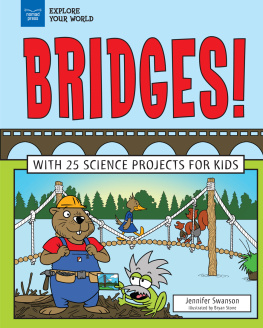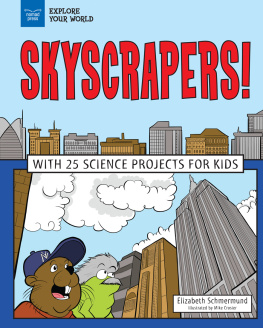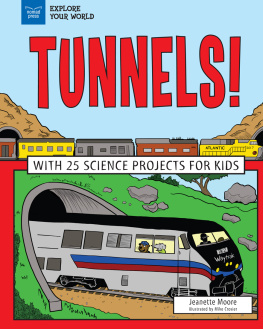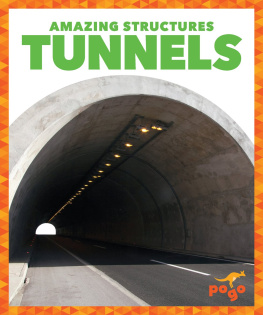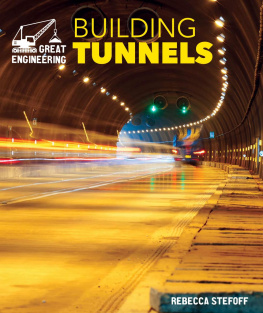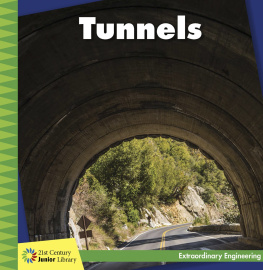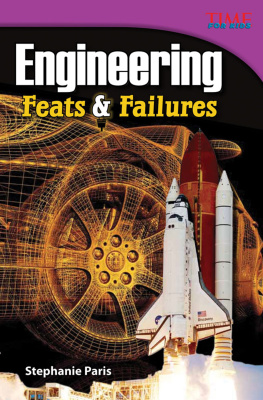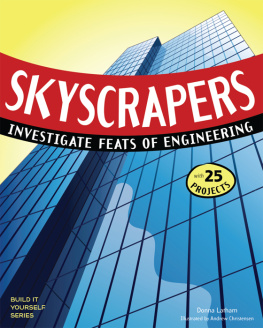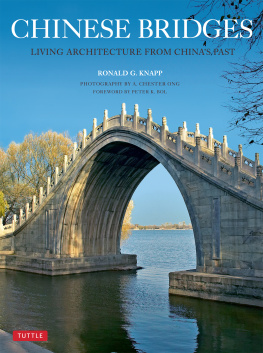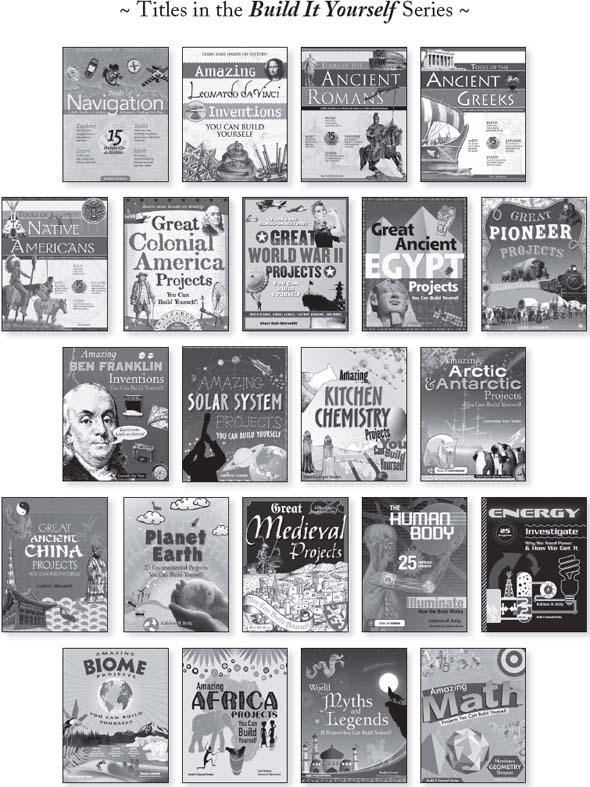
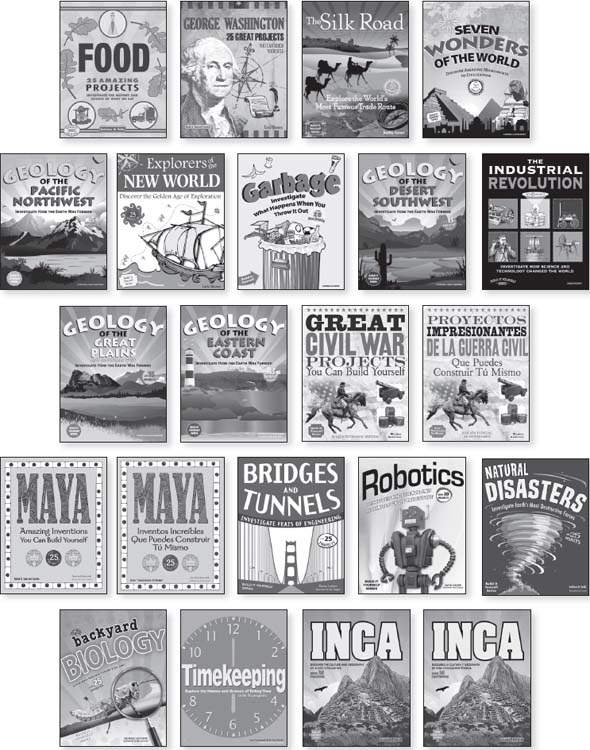

Nomad Press is committed to preserving ancient forests and natural resources. We elected to print Bridges and Tunnels: Investigate Feats of Engineering on 4,007 lbs. of Williamsburg Recycled 30% offset.
Nomad Press made this paper choice because our printer, Sheridan Books, is a member of Green Press Initiative, a nonprofit program dedicated to supporting authors, publishers, and suppliers in their efforts to reduce their use of fiber obtained from endangered forests.
For more information, visit www.greenpressinitiative.org
Nomad Press
A division of Nomad Communications
10 9 8 7 6 5 4 3 2 1
Copyright 2012 by Nomad Press. All rights reserved.
No part of this book may be reproduced in any form without permission in writing from the publisher, except by a reviewer who may quote brief passages in a review or for limited educational use.
The trademark Nomad Press and the Nomad Press logo are trademarks of Nomad Communications, Inc.
This book was manufactured by Sheridan Books,
Ann Arbor, MI USA.
May 2012, Job #336032
ISBN: 978-1-936749-51-5
Illustrations by Jen Vaughn
Educational Consultant, Marla Conn
Questions regarding the ordering of this book should be addressed to
Independent Publishers Group
814 N. Franklin St.
Chicago, IL 60610
www.ipgbook.com
Nomad Press
2456 Christian St.
White River Junction, VT 05001
www.nomadpress.net
CONTENTS
Introduction
Lifelines
Chapter 1
Engineering and Thinking Big
Chapter 2
Building Big: The Physics of Bridges
Chapter 3
Amazing Bridges
Chapter 4
Disaster! When Bridges Collapse
Chapter 5
Building Big: The Physics of Tunnels
Chapter 6
Amazing Tunnels
Chapter 7
Tunnel Disasters
Sincere thanks to environmental
scientist, cheerleader extraordinaire,
and first reader Nick Longo and
to physicist Eric Prebys, Ph.D, at
Fermilab in Batavia, Illinois.
LIFELINES

HAVE YOU EVER DRIVEN ACROSS a long bridge and wondered, How did they build this? Have you ever felt excited when driving through a dark tunnel? Bridges and tunnels are marvels of design and tributes to human ingenuity. Some are so impressive that they are the first thing people think of when they hear the name of a city. Once you see the Golden Gate Bridge in San Francisco, you never forget it! Across the globe, school buses loaded with kids and motorists on their way to jobs depend on bridges and tunnels to get where they need to go. Every day, people walk across bridges or peddle over them on bikes. Trains filled with commuters zoom through tunnels that connect sprawling suburbs with bustling cities.
WORDS to KNOW
bridge: a structure built to span natural or manmade obstacles such as rivers, bays, canyons, highways, and railways.
tunnel: a passageway that goes through or under natural or manmade obstacles such as rivers, mountains, roads, and buildings.
ingenuity: being clever, original, and inventive.
Bridges and tunnels are lifelines that connect people and places.
WORDS to KNOW
commuter: a person who regularly travels from one place to another to get to and from work.
BCE: put after a date, BCE stands for Before Common Era and counts down to zero. CE stands for Common Era and counts up from zero. The year this book is published is 2012 CE.
architect: someone who designs large structures and provides advice on construction.
Some tunnels even deliver water supplies over long distances. As long ago as 520 BCE, the ancient Greek architect Eupalinos of Megara confronted a staggering challenge. He needed a way to deliver water from its source at a far-away spring to Samos, an ancient city that today is called Pythagorion. But an obstacle loomed: how could he get the clay pipes that would carry the freshwater through the towering mountain that stood in the way?

His problem sparked an idea. He became the first engineer to design a plan for digging a tunnel from opposite ends. No one knows exactly how Eupalinos did it because no written records survive. Some experts believe Eupalinos drove wooden boards into the ground and may have placed an early kind of level on top of them to determine the horizontal plane. Eupalinos might also have used the ancient Greek surveying instrument called a dioptra. The dioptra contained protractors that measured angles in vertical and horizontal planes.
Whatever his method, Eupalinos plan proved incredibly precise.
WORDS to KNOW
engineer: someone who uses science and math to design and construct structures such as buildings, bridges, and tunnels.
level: a tool made with a tube that holds liquid with an air bubble. It is used to measure a horizontal plane.
plane: a flat or level surface.
protractor: a semicircular instrument used to measure and construct angles.
surveyor: someone who uses math to measure angles, distances, and elevations on the earths surfaces.
geometry: the branch of math that looks at the relationship of points, lines, surfaces, and shapes.

Long before he became the first President of the United States, George Washington worked as a surveyor. As a boy, he studied geometry and surveying. In 1768, when he was 16 years old, Washington began surveying land in Virginia.
WORDS to KNOW
World Heritage Site: a place listed by the United Nations Educational, Scientific and Cultural Organization (UNESCO) as having special cultural or physical importance.
arch: a curved structure in the shape of an upside-down U.
structure: a bridge, tunnel, building, or other object built from a number of different parts that are put together in a certain way.
engineering: the work an engineer does, using science and math to design and construct structures.
innovation: a new product or way of doing something.
natural resource: something from nature that people can use in some way, such as water, stone, and wood.

![Vaughn Jen Bridges and tunnels : investigate feats of engineering [with 25 projects]](/uploads/posts/book/143664/thumbs/vaughn-jen-bridges-and-tunnels-investigate.jpg)
![Vaughn Jen - Bridges and tunnels: investigate feats of engineering [with 25 projects]](/uploads/posts/book/242802/thumbs/vaughn-jen-bridges-and-tunnels-investigate-feats.jpg)
